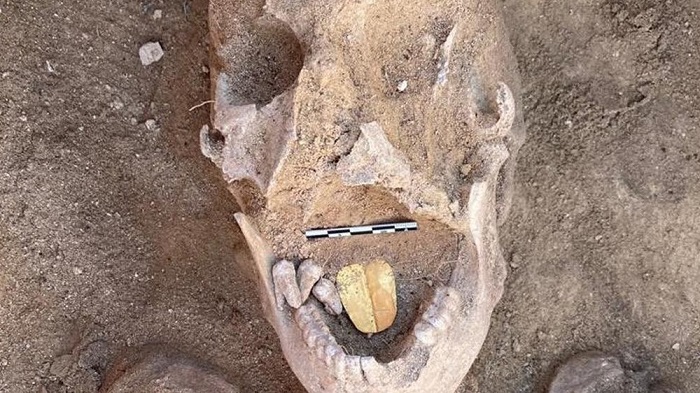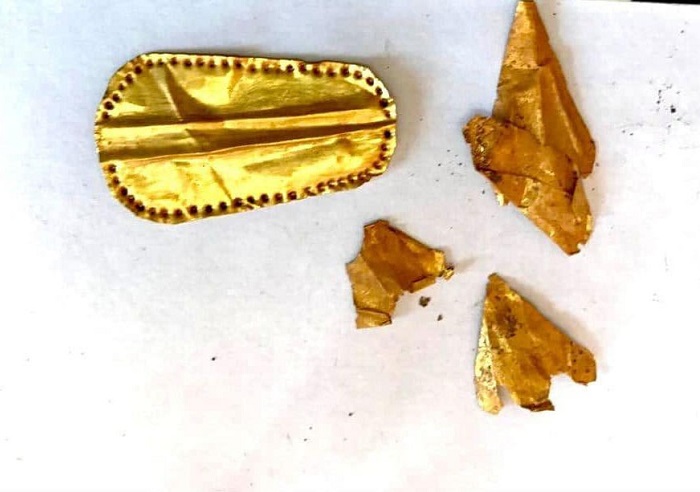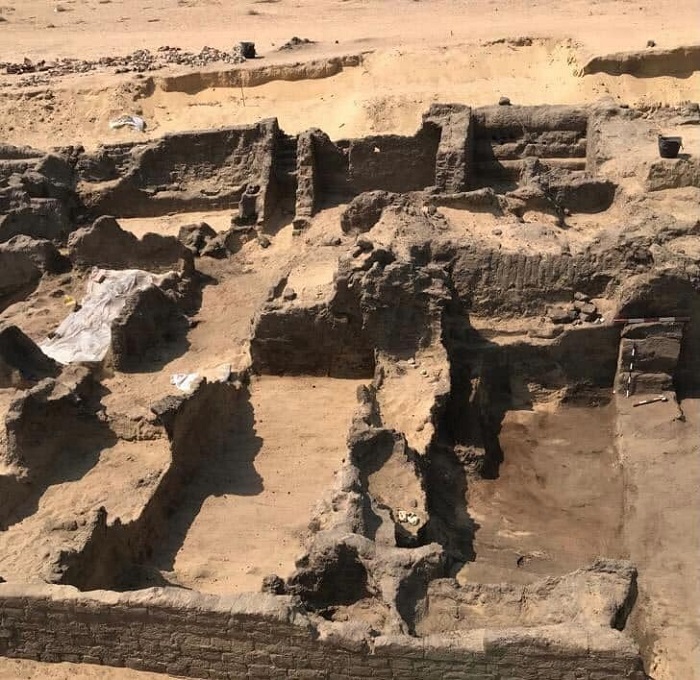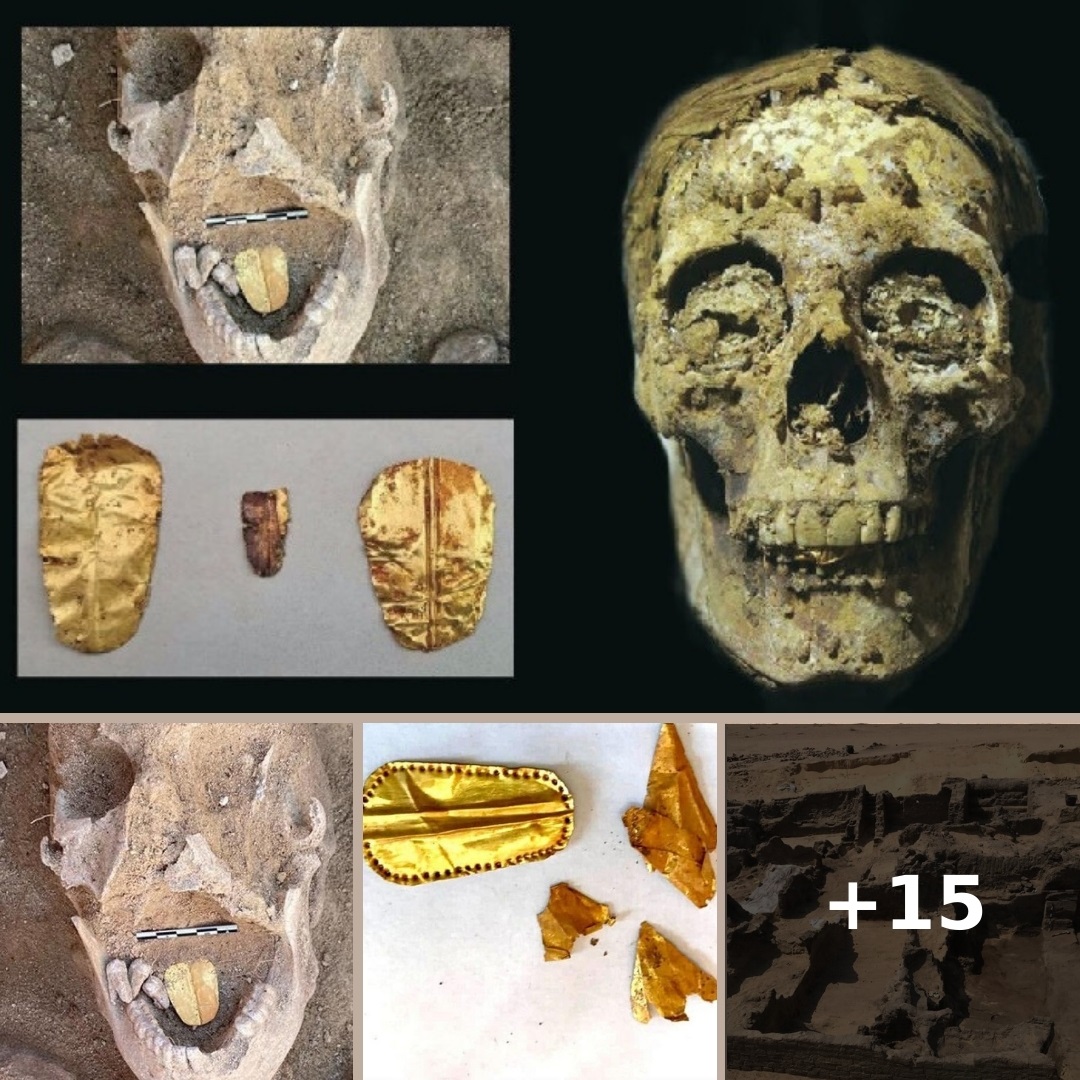Archaeologists have unearthed an ancient Egyptian skeleton that was buried with a golden tongue placed in the mouth possibly so the deceased could charm their way into the afterworld.

Egypt’s Ministry of Antiquities announced the discovery of this fancy-tongued skeleton last week along with 15 other skeletal remains and relics found at the temple of Taposiris Magna in western Alexandria, the second-largest city in Egypt. The haul of stunning findings dates back to the Late Period of Ancient Egyptian history when the Greeks and Romans ruled the kingdom, approximately 2,000 years ago.
As the Ministry notes, the gold tongue-shaped amulet was likely placed in the mouth of the deceased person during a special burial ritual to ensure their ability to speak in the afterlife before the court of Osiris, the God of the underworld. However, this practice appears to be extremely rare and there’s very little record of similar discoveries from Egypt.

The golden tongue wasn’t the only trick up the ancient Egyptians’ sleeves to assure a smooth journey into the afterlife. The team also reports that the excavations revealed gilded decorations displaying the deity Osiris.
Another skeleton was found adorned with a crown decorated with horns and a cobra snake on the forehead, as well as a wide necklace with a pendant in the shape of a falcon, the symbol of the highly important deity Horus, who represents the heavens.

Dr Khaled Abu Al-Hamd, Director General of Alexandria Antiquities, said one of the most impressive discoveries was a funeral mask for a woman, which he remarked was carved with “high accuracy” to portray the “features of the owner.”
On top of all this, the new excavations have found some artifacts that could “change our perception” of the Taposiris Magna. Also known as the “great tomb of Osiris,” some have said this grand temple is the final resting place of Queen Cleopatra VII, although the location of Cleopatra and Anthony’s burial has remained a long-standing mystery.

The latest dig has found a number of coins bearing the name and image of Cleopatra VII, while statues located around the site also indicate that it was constructed under the reign of King Ptolemy IV who ruled Egypt from 221 to 204 BCE.
The afterlife was a major concern throughout much of ancient Egypt’s history. Back in 2019, researchers revealed that an inscribed text discovered in a burial shaft in the Middle Egyptian necropolis of Dayr al-Barsha likely contained the earliest known copy of The Book of Two Ways, a kind-of illustrated “guidebook” to the underworld.

